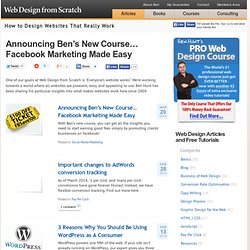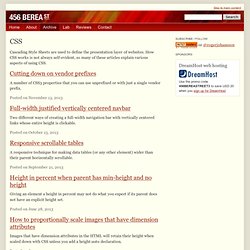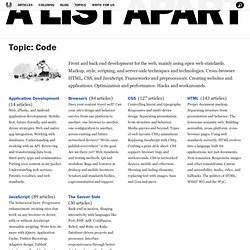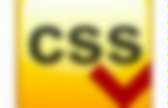Css_20_basicos
> Amartinrec
> 1. Técnica
> Diseño Web
> Css
Learning Cascading Style Sheet in simple and easy steps with examples. A complete reference manual for CSS2 and CSS3 properties, html, CSS, CSS Useful tips. CSS Reference. CSS-Tricks. Free Web Design Tutorials - How to Design Websites. InShare9 One of our goals at Web Design from Scratch is "Everyone's website works".

We're working towards a world where all websites are pleasant, easy, and appealing to use. Ben Hunt has been sharing his particular insights into what makes websites work here since 2004. Announcing Ben’s New Course… Facebook Marketing Made EasyWith Ben's new course, you can get all the insights you need to start earning good fees simply by promoting clients' businesses on facebook!
Important changes to AdWords conversion trackingAs of March 2014, '1 per click' and 'many per click' conversions have gone forever.
Css-discuss.org. CSSeasy.com - Learn CSS the modern way. Css.maxdesign.com.au - CSS resources and tutorials for web designers and web developers. Css Zen Garden: The Beauty in CSS Design. Andy Budd. Learn CSS Positioning in Ten Steps: position static relative absolute float. 1. position:static The default positioning for all elements is position:static, which means the element is not positioned and occurs where it normally would in the document.

Normally you wouldn't specify this unless you needed to override a positioning that had been previously set. 2. position:relative If you specify position:relative, then you can use top or bottom, and left or right to move the element relative to where it would normally occur in the document. Let's move div-1 down 20 pixels, and to the left 40 pixels: Notice the space where div-1 normally would have been if we had not moved it: now it is an empty space. It appears that position:relative is not very useful, but it will perform an important task later in this tutorial. 3. position:absolute When you specify position:absolute, the element is removed from the document and placed exactly where you tell it to go.
Let's move div-1a to the top right of the page: What I really want is to position div-1a relative to div-1. Footnotes 10.
HTML and CSS Tutorials, References, and Articles. /* Position Is Everything */ — Modern browser bugs explained in detail!
Categories. Cascading Style Sheets are used to define the presentation layer of websites.

How CSS works is not always self-evident, so many of these articles explain various aspects of using CSS. Cutting down on vendor prefixes A number of CSS3 properties that you can use unprefixed or with just a single vendor prefix. Full-width justified vertically centered navbar Two different ways of creating a full-width navigation bar with vertically centered links whose entire height is clickable. Responsive scrollable tables A responsive technique for making data tables (or any other element) wider than their parent horizontally scrollable. Height in percent when parent has min-height and no height Giving an element a height in percent may not do what you expect if its parent does not have an explicit height set.
How to proportionally scale images that have dimension attributes. Eric Meyer: CSS. CSS Work Books by Eric Including Smashing CSS, CSS: The Definitive Guide, Third Edition, CSS Pocket Reference, and Cascading Style Sheets 2.0 Programmer’s Reference, among several others.

Articles by Eric Local copies of CSS articles, as well as other writing I've done.
CSS Basics. CSS Help Pile - CSS & Standards-Related Books, Magazines - Artypapers. For some time I've been thinking of adding a books section to the help pile, but that always seemed sort of useless since so many books I would have posted pretty much would have been by the same person: Eric Meyer. Now, there's absolutely no reason for me to go through and attempt to re-create his biography (which for some reason I'm tempted to do) but certainly take a look at his site and pay particular attention to the section on CSS that links to many of the great resources he's made available. You can also check out the recent Web Standards Group interview: Ten Questions for Eric Meyer. (note: Obviously many, many people are aware of Eric Meyer already, so I wasn't sure if it was even necessary to mention him on the pile, but not mentioning him created this gapping hole.)
A List Apart: Topics: Code: CSS. Front and back end development for the web, mainly using open web standards.

Markup, style, scripting, and server-side techniques and technologies. Cross-browser HTML, CSS, and JavaScript. Frameworks and preprocessors. Creating websites and applications. Optimization and performance.





